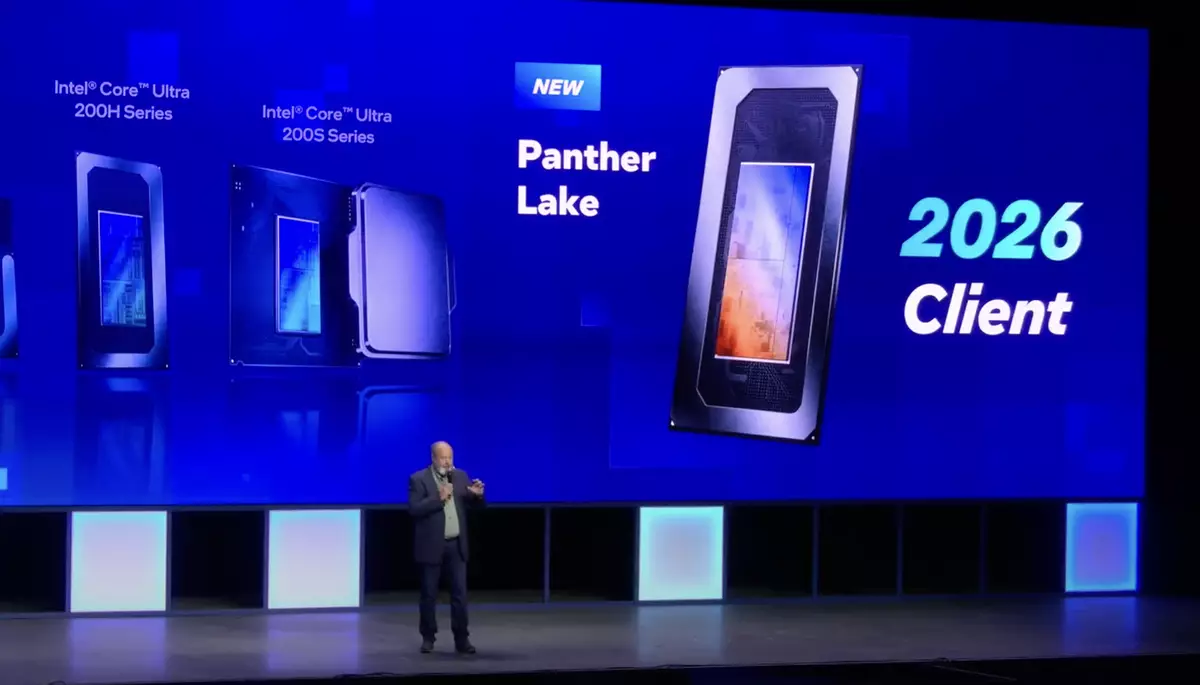In the realm of semiconductor innovation, few names resonate as powerfully as Intel, the titan of computing technology. At the recent Intel Vision 2025 conference, new CEO Lip-Bu Tan took to the stage, but instead of unveiling groundbreaking products, he offered a tempered yet optimistic outlook on Intel’s future. The highlight was the confirmation of the Panther Lake CPU, which aims to bridge the gap between power efficiency and raw performance. While on paper it promises to be an impressive contender, there are cautionary notes that need to be considered.
Breaking Down the Panther Lake Promise
The Panther Lake CPU stands out due to its design philosophy which reportedly marries the efficiency of Lunar Lake with the raw performance capabilities of Arrow Lake. This is an intriguing proposition, especially as power consumption continues to be a decisive factor for today’s mobile devices. Johnson’s assertion that Panther Lake is “built to scale 18A” generates excitement, but the journey from production to retail availability raises eyebrows. The projected timeline stretches into late 2025 for production, with actual consumer products rolling out only in 2026.
This timeframe is critical. While the technology is developed, there’s a considerable lag in translating that innovation into tangible, market-ready products—a situation that not only impacts Intel’s market strategy but also raises questions about the competitiveness of their offerings when they finally do arrive.
Understanding Chip Production Challenges
Intel’s ongoing struggles with manufacturing timelines and yield rates are well-documented, reminiscent of their turbulent history with the highly ambitious 10nm process node. Here, 18A is not just another increment but an ambitious leap that integrates new technologies such as backside power along with enhanced transistor density. Nevertheless, it’s essential to note that these advancements come at a price—delays are becoming a norm rather than an exception. The missed targets, particularly the previously announced 20A node that was scrapped, underscore a deeper systemic issue within Intel’s production framework.
The pressures on semiconductor manufacturing are immense, especially when competing against TSMC, the current industry leader. With its robust and efficient N3 nodes and even the forthcoming N2 technologies, TSMC maintains a formidable competitive advantage, leaving many to wonder if Intel can reposition itself effectively in this race. The launch delays speak volumes—unfulfilled promises lead to market cynicism, which chips away at consumer trust.
The Long-Term Implications for Intel
The broader context of these developments matters immensely. Intel is in a pivotal race—not just with TSMC, but with industry perceptions regarding its technological leadership. The commitment to Panther Lake indicates a desire to forge ahead, but it must be coupled with accountability in execution. For Intel to recover its reputed status, consistent delivery on innovation is non-negotiable.
However, skepticism remains. The industry has been through cycles of hope and disappointment, especially related to introductory timelines and the actual performance of new generations of chips. Many tech enthusiasts and analysts are left pondering—will Panther Lake fulfill its promise of elevating performance while matching the efficiency benchmarks set by its predecessors? The risk of being eclipsed by more agile competitors looms large, especially if production issues persist.
What Lies Ahead for Semiconductor Innovation
As the semiconductor landscape continues to evolve at a breathtaking pace, the implications of Intel’s strategic decisions will resonate throughout the tech ecosystem. Panther Lake, despite its ambitious goals, must navigate production realities and market readiness with agility. The financial and reputational stakes are high, as striking the right balance between innovation and execution will define Intel’s next chapter.
Intel understands that the race is on—not just against TSMC, but against time itself. It’s a high-stakes environment where technological delays can mean the difference between market dominance and obsolescence. The question remains: will Intel finally seize the opportunity to reclaim its position as the vanguard of innovation, or will it be left grappling with the consequences of its own ambitions? The semiconductor community watches closely, eager for further revelations and the unfolding story of Panther Lake.

